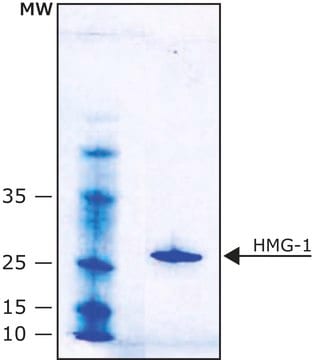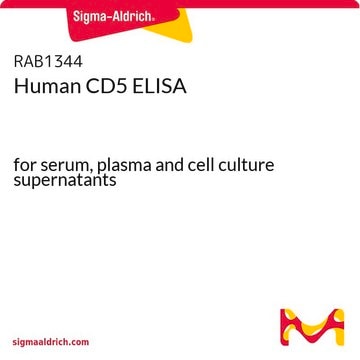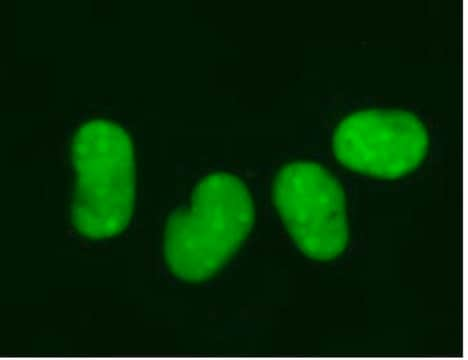Recommended Products
biological source
bovine (calf) thymus
Assay
≥85% (SDS-PAGE)
form
frozen liquid
mol wt
~24.9 kDa
packaging
pkg of 10 μg
storage condition
avoid repeated freeze/thaw cycles
concentration
900 μg/mL
technique(s)
membrane array: suitable
color
colorless to clear
NCBI accession no.
UniProt accession no.
shipped in
dry ice
storage temp.
−70°C
Gene Information
bovine ... HMG1() , HMGB1(282691)
Biochem/physiol Actions
High mobility group 1 (HMG1) is a 26 kDa highly conserved non-sequence-specific DNA-binding nuclear protein. Mammalian HMG1 has two homologous DNA-binding domains HMG boxes, A and B (each of 80–90 amino-acid residues), linked by a short basic region to an acidic C-terminal domain containing 30 consecutive Asp and Glu residues. HMG1 has been implicated in a number of fundamental biological processes including transcription, replication and recombination, in which it plays a role in manipulating DNA structure by bending, looping, compaction or unwinding, or by directly contacting with distinct cellular proteins. HMG-1 can act as a repressor, by interacting with TBP to block pre-initiation complex formation or as an activator, by facilitating the binding of various transcription factors to their cognate DNA sequences. Most recently, it was discovered that HMG-1 is a late mediator of delayed endotoxin lethality by activating downstream cytokine release.
Physical form
Clear and colorless frozen liquid solution
Preparation Note
Use a manual defrost freezer and avoid repeated freeze-thaw cycles. While working, please keep sample on ice.
Storage Class Code
10 - Combustible liquids
WGK
WGK 1
Flash Point(F)
Not applicable
Flash Point(C)
Not applicable
Certificates of Analysis (COA)
Search for Certificates of Analysis (COA) by entering the products Lot/Batch Number. Lot and Batch Numbers can be found on a product’s label following the words ‘Lot’ or ‘Batch’.
Already Own This Product?
Find documentation for the products that you have recently purchased in the Document Library.
Cong Pang et al.
Brain sciences, 12(9) (2022-09-24)
Endogenous host-derived molecules named damage-associated molecular patterns (DAMPs) can induce excessive non-sterile inflammatory responses on recognition of specific membrane-tethered receptors. Here in this study, we aimed to explore the role of DAMP molecule HMGB1 in astrocyte-mediated sterile neuroinflammation and the
M E Bianchi et al.
Science (New York, N.Y.), 243(4894 Pt 1), 1056-1059 (1989-02-24)
Cruciform DNA, a non-double helix form of DNA, can be generated as an intermediate in genetic recombination as well as from palindromic sequences under the effect of supercoiling. Eukaryotic cells are equipped with a DNA-binding protein that selectively recognizes cruciform
Structural features of the HMG chromosomal proteins and their genes.
M Bustin et al.
Biochimica et biophysica acta, 1049(3), 231-243 (1990-07-30)
V Zappavigna et al.
The EMBO journal, 15(18), 4981-4991 (1996-09-16)
High mobility group protein 1 (HMG1) is a non-histone, chromatin-associated nuclear protein with a proposed role in the regulation of eukaryotic gene expression. We show that HMG1 interacts with proteins encoded by the HOX gene family by establishing protein-protein contacts
Our team of scientists has experience in all areas of research including Life Science, Material Science, Chemical Synthesis, Chromatography, Analytical and many others.
Contact Technical Service








